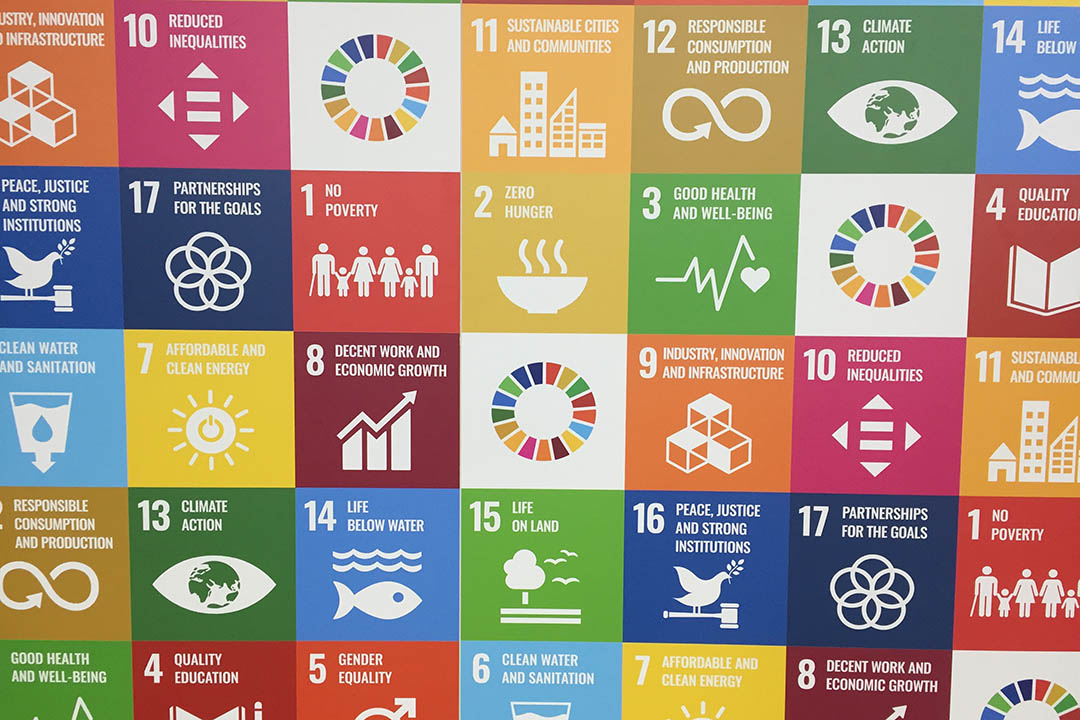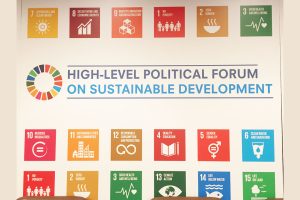By Åsa Persson, Research Director and Deputy Director, Stockholm Environment Institute (SEI), Ivonne Lobos Alva, Senior Expert, SEI, and Therese Bennich, Research Fellow, SEI
The world is approaching the midway point of the pursuit to achieve the transformational 2030 Agenda. Six and a half years after the agenda officially came into force, one must ask, what does the world have to show?
The latest progress report indicates that the world is far off track meeting the Goals by 2030. A review of scientific evidence shows the political impact of the SDGs has been limited. Scientists have found that the “transformation” brought on by the Goals has been mainly a rhetorical one – affecting the way people understand and communicate about sustainable development, but not so much how they do things. The review’s authors call for more profound normative and institutional change – from legislative action to changing resource allocation.
At the same time, when we evaluate the impact of the SDGs so far, we must also consider what the world would look like without the Goals. What if the world had not embarked on the 2030 Agenda to offer a long-term vision and to set mid-term goals? What if this mission had not been there as the world responded to the COVID-19 pandemic and to the war in Ukraine?
A poor performance review ahead of a mid-term point and the upcoming 2023 SDG Summit creates a “go big or go home” type of feeling. But with less than half the time left to reach the deadline for the SDGs, what does “going big” mean? Should we keep trying to accelerate things under the banner of the Decade of Action? Should we broaden the scope and aim to hit all the SDGs, even if we do not fully reach them? Or should we just forget about the SDGs now, and start designing the next effort? The course we take from now on will set an example of how international agendas and global goals fare in terms of leading us to a more sustainable future.
Also up for discussion in 2023, is Our Common Agenda launched in September 2021 by UN Secretary-General António Guterres, following a mandate in the September 2020 declaration on the commemoration of the UN’s 75th anniversary. The report contains approximately 90 proposals and recommendations. It makes a strong call for all policy and budget decisions to be “backed by science and expertise.”
As an environment and development research institute, the Stockholm Environment Institute (SEI) stands firmly behind the recommendation to move ahead with action that is supported by evidence. Similarly, the institute stands behind the SDGs as the world’s first effort to bring together all dimensions of sustainable development and the unparalleled legitimacy this endorsement enjoys from Member States and other actors. Examples of SEI’s backing of this effort are manyfold: contributions of knowledge and evidence to the 2023 Global Sustainable Development Report and to policymaking at the national and local levels – through tools such as SDG Synergies and LEAP, through work focusing on integrated nationally determined contribution (NDC) and SDG planning, and through comparative analysis of policy coherence.
But moving forward and looking to the second half of the course the world has set for itself, we also see the need to be more practical and more focused. The good features of the SDGs – comprehensiveness, universality, integrated thinking – should be used in ways that respond to real-world policy needs. We believe three strategies could help.
Prioritization. What can we learn from prior attempts at implementing global goals? The data are clear. Only around one-tenth of global environment and sustainability targets since 1972 have been achieved or seen significant progress. Frankly, we have few success stories to draw upon. Nevertheless, the experience with the Millennium Development Goals (MDGs) shows that focused acceleration can happen. The 2010 MDG Acceleration Framework, launched for the last five years of the pursuit of these goals, gave a strong mandate for prioritizing a smaller set of targets – those where change was assessed to be critical. It then focused on assessing bottlenecks for key interventions and on integrating action into existing mainstream planning frameworks and processes, such as national budgeting and Poverty Reduction Strategy Papers. While the SDGs are broader and more universal than the MDGs, lessons can be learned. The 17 SDGs provide the world’s best and most comprehensive policy assessment framework, and the integrative and systemic perspective they invite should not be lost. However, integrated analysis must not stop short at initial mapping. It must strongly move towards setting priority goals based on the national or local context. This prioritization must be evidence based. Leaders must decide what results are non-negotiable for 2030 to set societies on a more sustainable path towards 2050. Note that informed prioritization, based on scientific evidence both on problems and feasibility of solutions, is something different from cherry-picking, and there are ample tools from the scientific community that can support governments in this task.
Localization. This is the key focal point as we move forward. Local governments have proven to be essential for COVID-19 responses. They need support to continue to play this important role in recovery. This is why at SEI we have engaged in the Local2030 Coalition. In 2021, the Executive Office of the UN Secretary-General commissioned SEI to develop a project and strategy as part of this UN-led effort to support and accelerate action on the SDGs at the local level. Our research shows the need for and importance of generating local actions, to prepare all urban stakeholders to better understand and apply the SDGs at city level, and to generate synergies with other agendas, such as the Paris Agreement on climate change. Local actors still find it difficult to engage in national, regional, and global forums where priority setting, programming, and funding are discussed and decided. This month’s High-level Political Forum on Sustainable Development (HLPF) is one of the stages where local actors have an important role to play.
Fewer good practice examples, more best practice interventions. To really accelerate action, decision makers and the knowledge community alike must spell out the theory of change behind the SDGs. What do we think will change our performance on the Goals? Will the change come from measurable targets and indicators? From institutional change, such as SDG taskforces? Or from effective policy interventions designed within traditional sectoral policy domains? Likely, change will come from a combination of these things. However, the world must move beyond anecdotal evidence and large inventories of “good practice” examples. Many of the self-reported SDG actions and partnerships do not have clear potential for transformative change and are not mainstreamed into core decision making. More analysis should focus on discerning best practices. The research question we should ask is: which interventions will have the greatest effect on increasing performance on the SDGs and the greatest synergies? This is a complex research and evaluation question. Nevertheless, we must answer it if the world is to accelerate action.
Åsa Persson is Research Director and Deputy Director of the Stockholm Environment Institute (SEI). She is one of 15 scientists appointed to write the UN’s 2023 Global Sustainable Development Report. Ivonne Lobos Alva is SEI’s lead Senior Expert Researcher for work on the SDGs. She is based at SEI Latin America. Therese Bennich is a Research Fellow at SEI, based in its Stockholm headquarters.
SEI Research Director and Deputy Director Åsa Persson will participate in a high-profile panel debate on the state of the 2030 Agenda and the 2023 SDG Summit on 7 July 2022.

